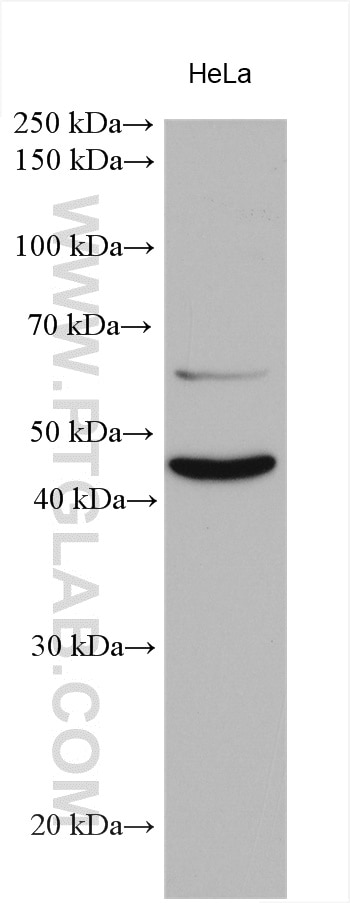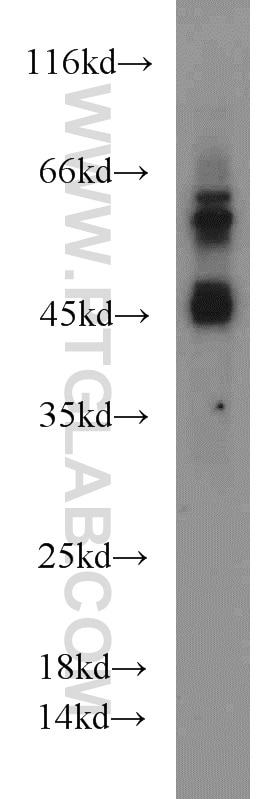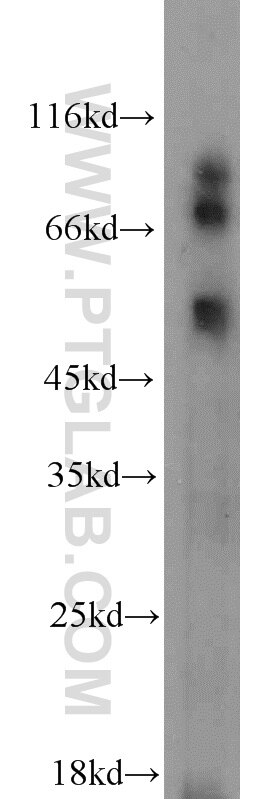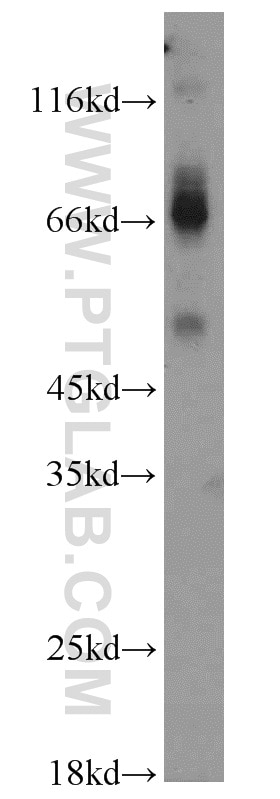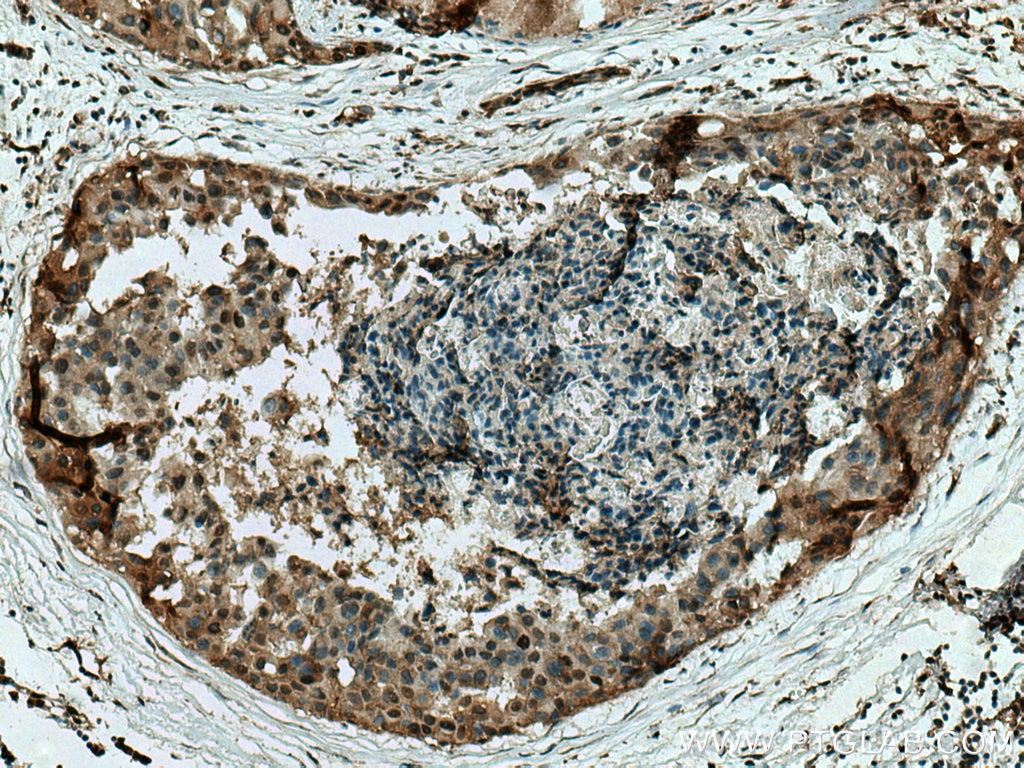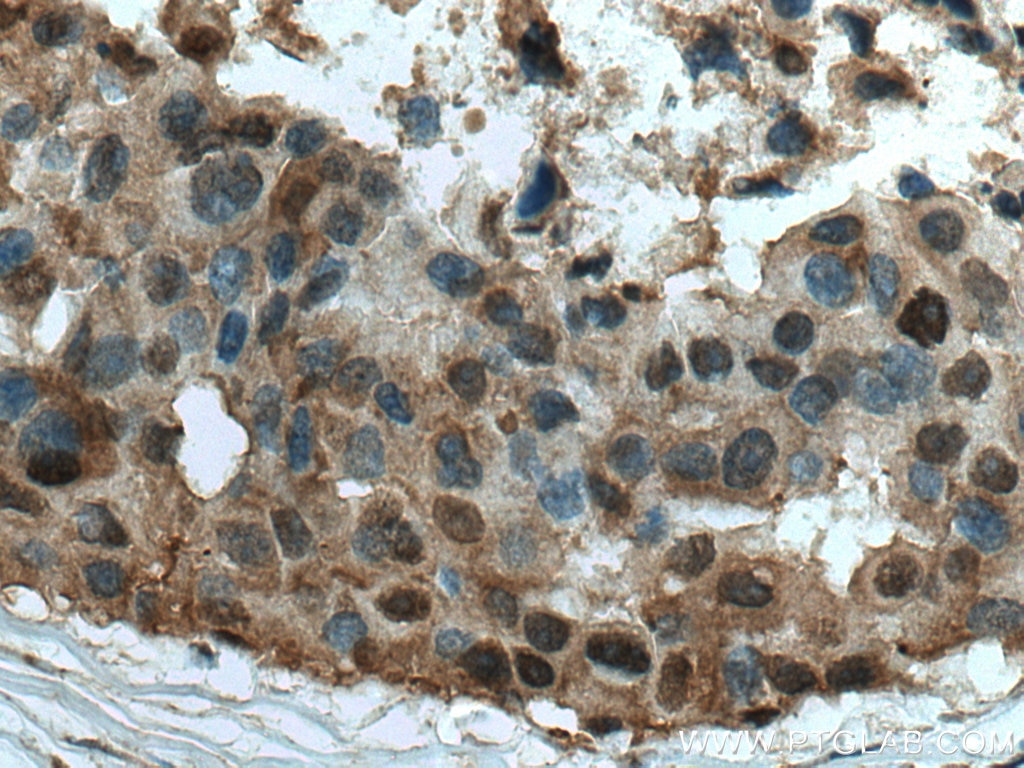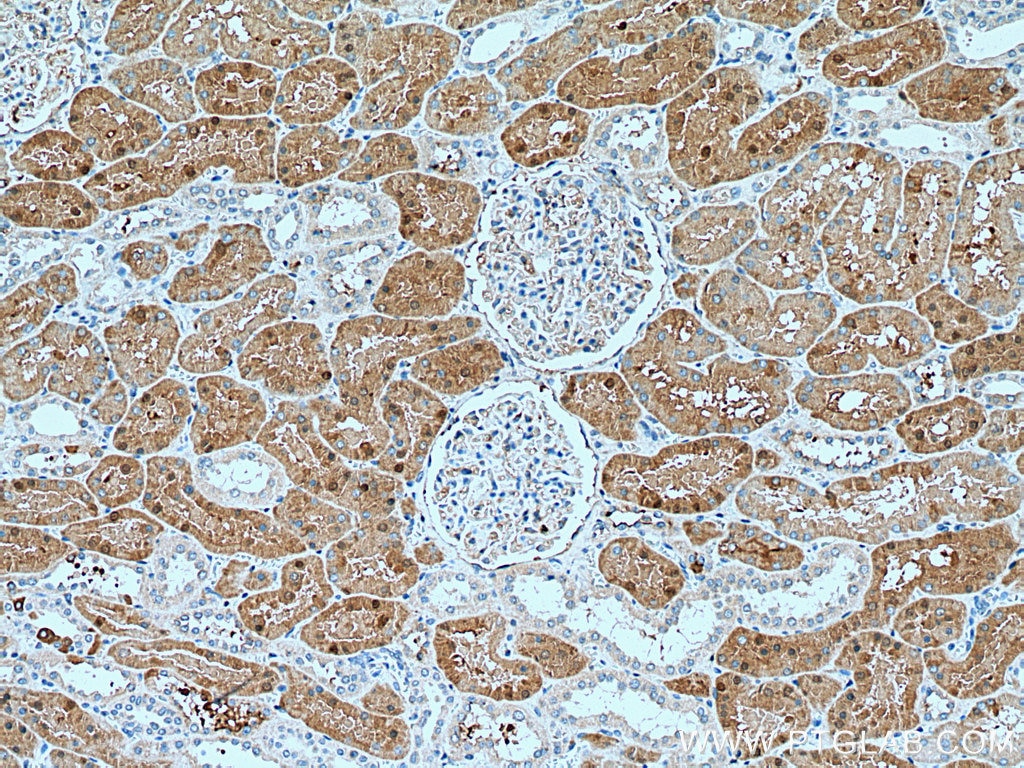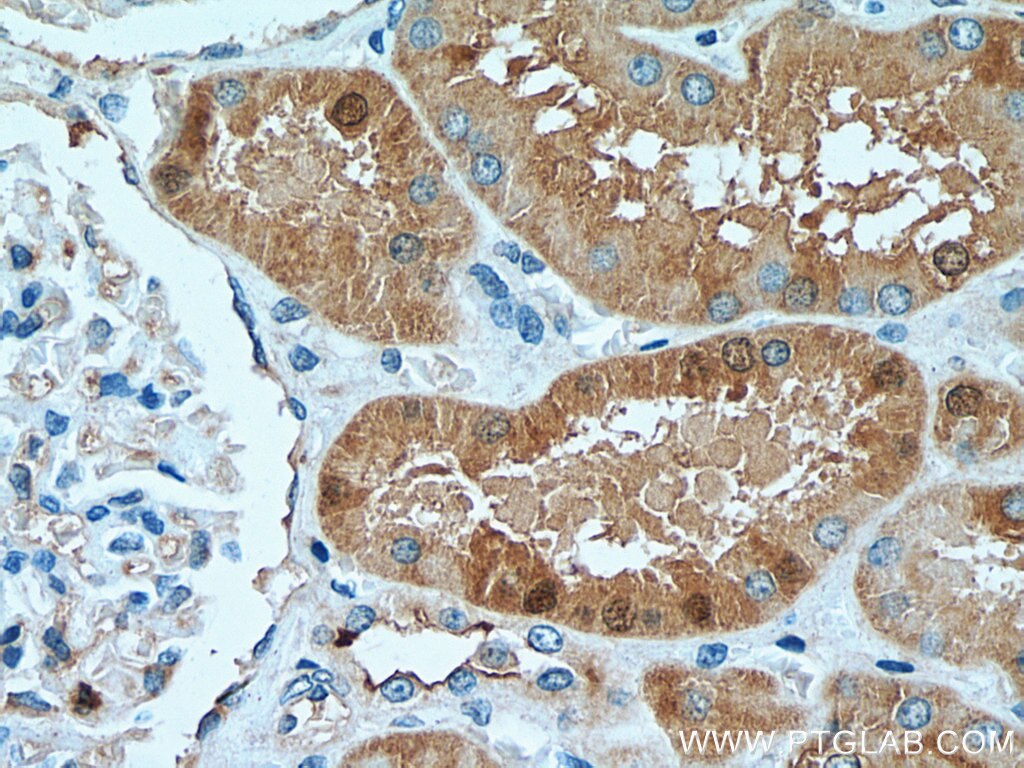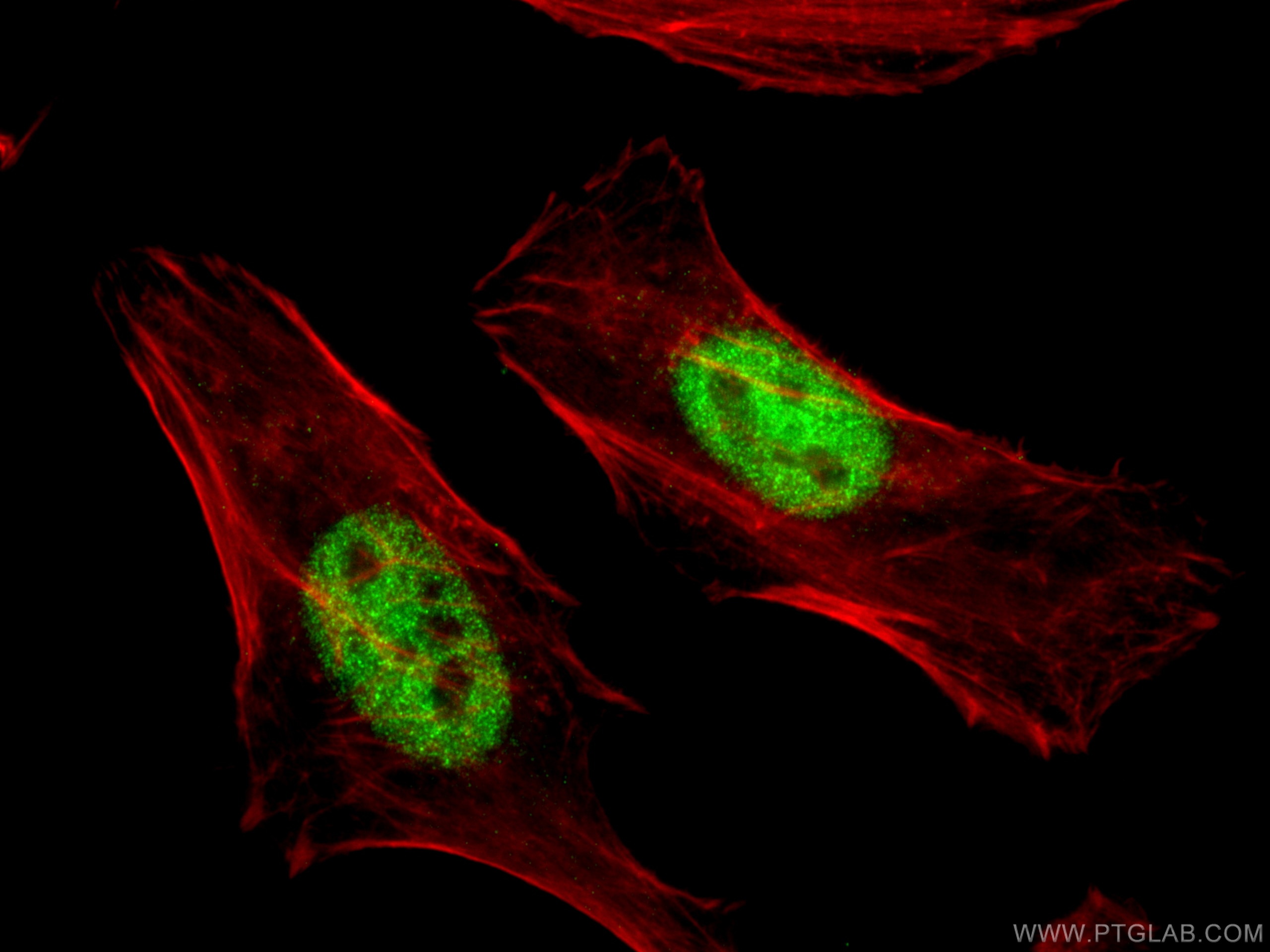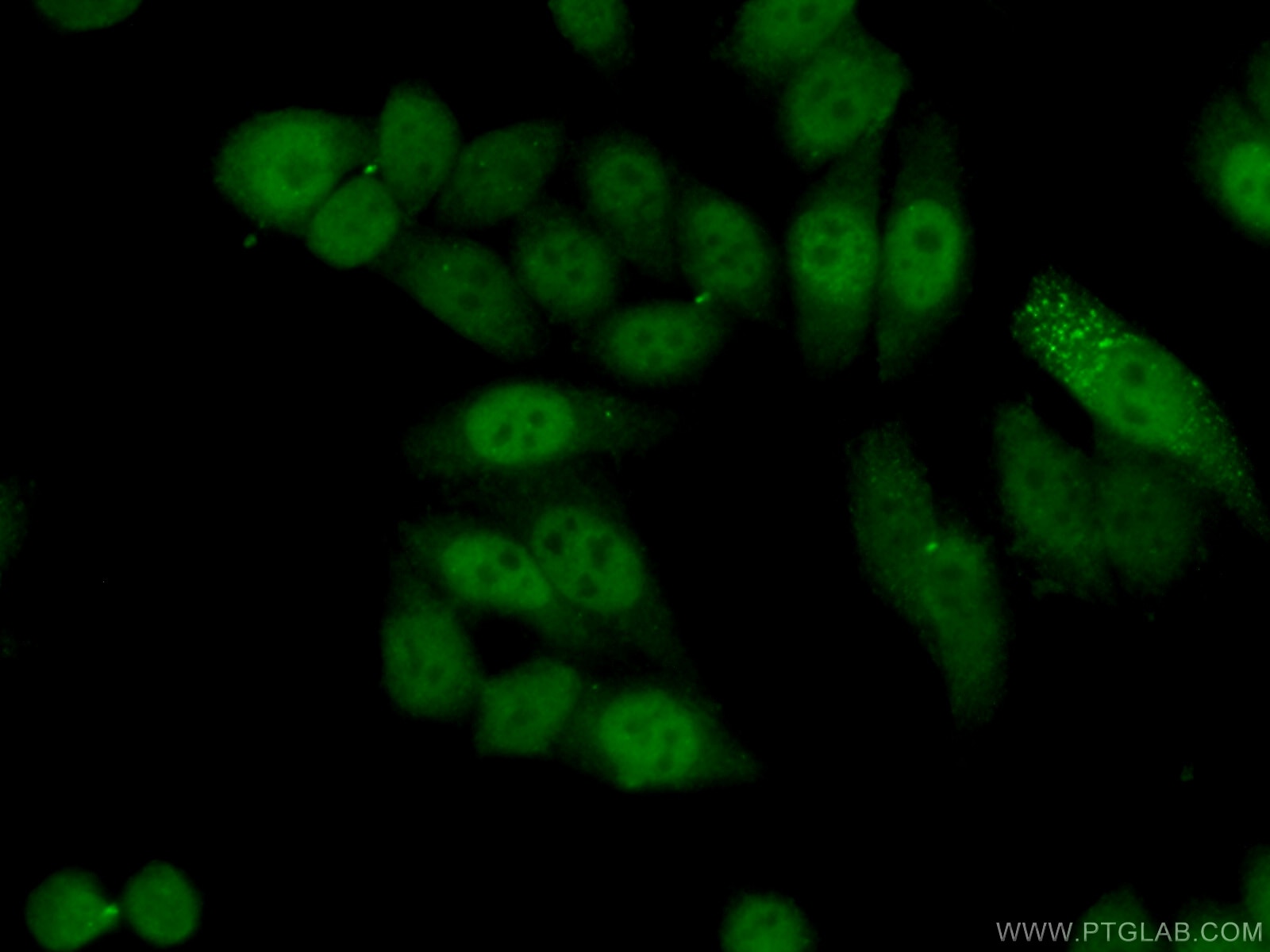Validation Data Gallery
Tested Applications
| Positive WB detected in | HeLa cells, A549 cells, mouse skeletal muscle tissue, mouse colon tissue |
| Positive IHC detected in | human breast cancer tissue, human kidney tissue Note: suggested antigen retrieval with TE buffer pH 9.0; (*) Alternatively, antigen retrieval may be performed with citrate buffer pH 6.0 |
| Positive IF/ICC detected in | HeLa cells |
Recommended dilution
| Application | Dilution |
|---|---|
| Western Blot (WB) | WB : 1:500-1:1000 |
| Immunohistochemistry (IHC) | IHC : 1:50-1:500 |
| Immunofluorescence (IF)/ICC | IF/ICC : 1:200-1:800 |
| It is recommended that this reagent should be titrated in each testing system to obtain optimal results. | |
| Sample-dependent, Check data in validation data gallery. | |
Published Applications
| WB | See 10 publications below |
| IHC | See 2 publications below |
Product Information
13949-1-AP targets MAPKAPK2 in WB, IHC, IF/ICC, ELISA applications and shows reactivity with human, mouse samples.
| Tested Reactivity | human, mouse |
| Cited Reactivity | human, mouse |
| Host / Isotype | Rabbit / IgG |
| Class | Polyclonal |
| Type | Antibody |
| Immunogen |
CatNo: Ag5060 Product name: Recombinant human MAPKAPK2 protein Source: e coli.-derived, PGEX-4T Tag: GST Domain: 1-400 aa of BC036060 Sequence: MLSNSQGQSPPVPFPAPAPPPQPPTPALPHPPAQPPPPPPQQFPQFHVKSGLQIKKNAIIDDYKVTSQVLGLGINGKVLQIFNKRTQEKFALKMLQDCPKARREVELHWRASQCPHIVRIVDVYENLYAGRKCLLIVMECLDGGELFSRIQDRGDQAFTEREASEIMKSIGEAIQYLHSINIAHRDVKPENLLYTSKRPNAILKLTDFGFAKETTSHNSLTTPCYTPYYVAPEVLGPEKYDKSCDMWSLGVIMYILLCGYPPFYSNHGLAISPGMKTRIRMGQYEFPNPEWSEVSEEVKMLIRNLLKTEPTQRMTITEFMNHPWIMQSTKVPQTPLHTSRVLKEDKERWEDVKEEMTSALATMRVDYEQIKIKKIEDASNPLLLKRRKKARALEAAALAH 相同性解析による交差性が予測される生物種 |
| Full Name | mitogen-activated protein kinase-activated protein kinase 2 |
| Calculated molecular weight | 400 aa, 46 kDa |
| Observed molecular weight | 47-50 kDa |
| GenBank accession number | BC036060 |
| Gene Symbol | MAPKAPK2 |
| Gene ID (NCBI) | 9261 |
| RRID | AB_2877995 |
| Conjugate | Unconjugated |
| Form | |
| Form | Liquid |
| Purification Method | Antigen affinity purification |
| UNIPROT ID | P49137 |
| Storage Buffer | PBS with 0.02% sodium azide and 50% glycerol{{ptg:BufferTemp}}7.3 |
| Storage Conditions | Store at -20°C. Stable for one year after shipment. Aliquoting is unnecessary for -20oC storage. |
Background Information
MAPKAPK2(mitogen-activated protein kinase-activated protein kinase 2) is also named as MK2, MAPKAP-K2, MK-2 and belongs to the CAMK Ser/Thr protein kinase family. MAPKAPK2, one of several kinases directly phosphorylated and activated by p38 MAPK, plays a central role in the inflammatory response and is in the nucleus of unstimulated cells and moves rapidly to the cytoplasm after stimulation(PMID:12171911). It is also involved in many other cellular processes including stress responses, nuclear export, gene expression regulation and cell proliferation. Multiple residues of MAPKAPK2 are generally phosphorylated in vivo in response to stress, but only 4 residues(Thr25, Thr222, Ser272, and Thr334) are phosphorylated by p38 MAPK in vitro(PMID:22351694). It has 2 isoforms produced by alternative splicing and the range of the molecular weight is 42-60 kDa according to the references(PMID:10666409; 11328854;8995385).
Protocols
| Product Specific Protocols | |
|---|---|
| IF protocol for MAPKAPK2 antibody 13949-1-AP | Download protocol |
| IHC protocol for MAPKAPK2 antibody 13949-1-AP | Download protocol |
| WB protocol for MAPKAPK2 antibody 13949-1-AP | Download protocol |
| Standard Protocols | |
|---|---|
| Click here to view our Standard Protocols |
Publications
| Species | Application | Title |
|---|---|---|
Mol Cancer Res Sophoridine inhibits human colorectal cancer progression via targeting MAPKAPK2. | ||
Food Funct L-Theanine mediates the p38MAPK signaling pathway to alleviate heat-induced oxidative stress and inflammation in mice. | ||
Toxicol Appl Pharmacol p38 MAPK-DRP1 signaling is involved in mitochondrial dysfunction and cell death in mutant A53T α-synuclein model of Parkinson's disease. | ||
Int J Mol Med Aryl hydrocarbon receptor inhibits inflammation in DSS‑induced colitis via the MK2/p‑MK2/TTP pathway. | ||
Brain Res Bull The p38 mitogen activated protein kinase regulates β-amyloid protein internalization through the α7 nicotinic acetylcholine receptor in mouse brain. | ||
Cell Death Dis Inhibition of DTYMK significantly restrains the growth of HCC and increases sensitivity to oxaliplatin. |

